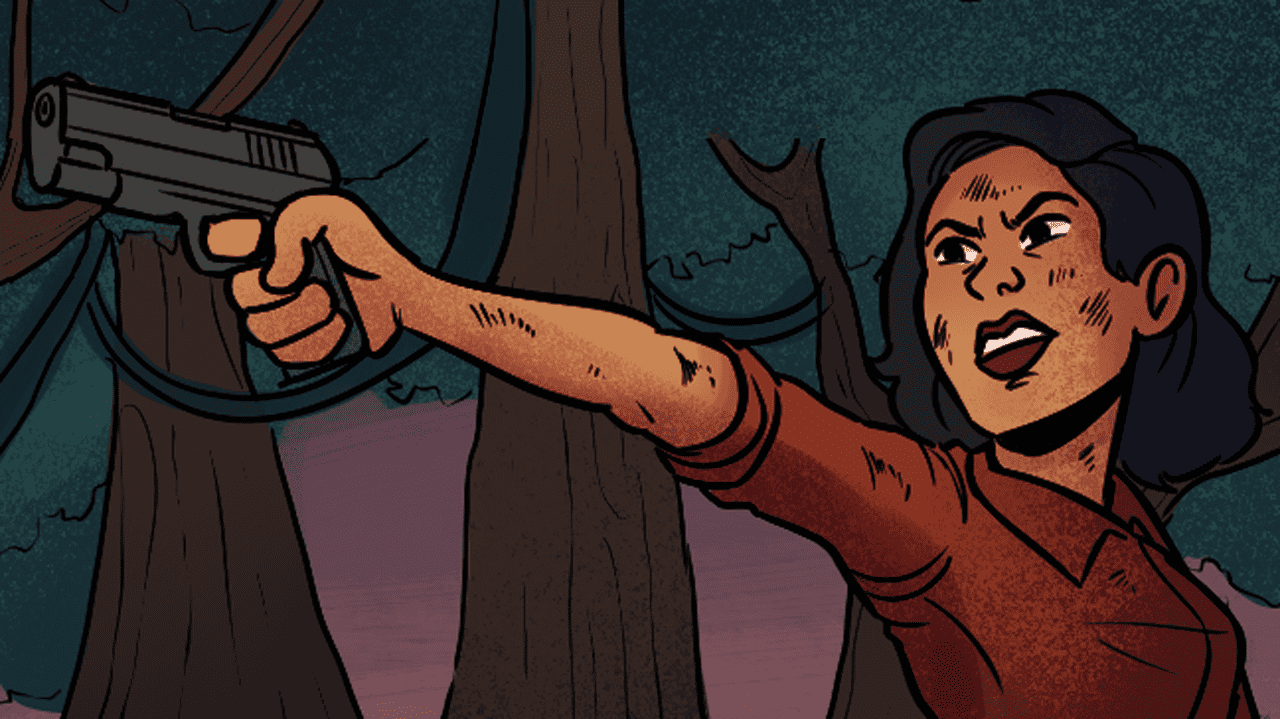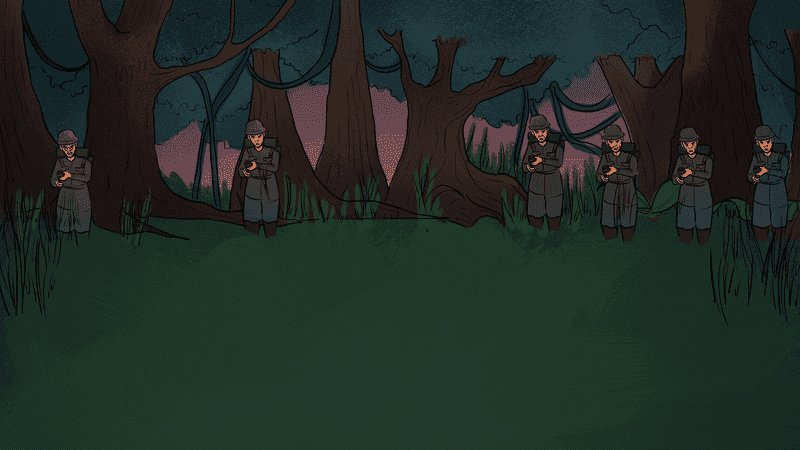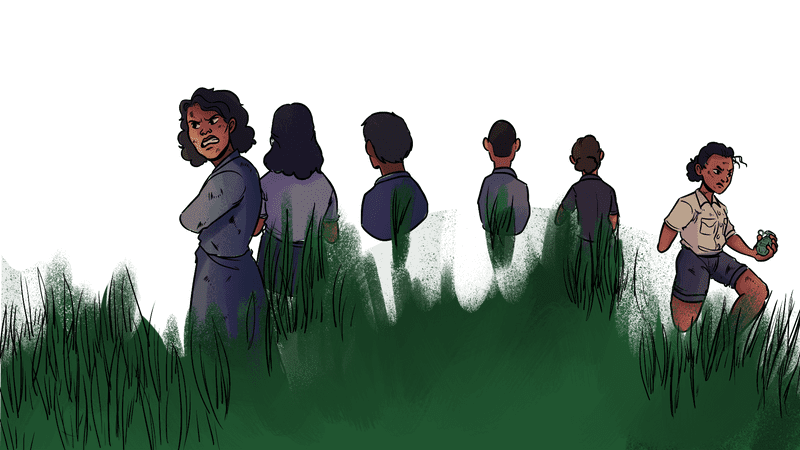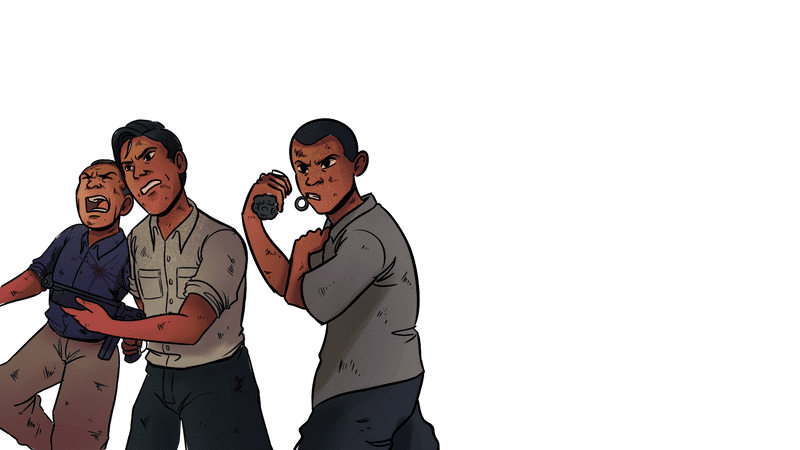Chapter Two: The Crucible of War
1941 – 1945
Guerrillas
Before the Japanese conquered the Philippines, guerrilla groups formed to resist their rule.
Before the Japanese had even fully conquered the Philippines, a range of guerrilla groups formed to resist their rule. Some were large and well-organized forces that functioned like armies and stayed in close contact with America’s temporary headquarters in Australia. They were comprised of Filipinos trained in the U.S. armed forces and American soldiers who stayed behind. Also joining were American colonial settlers who evaded internment, including Wendell Fertig, a bold guerrilla leader based in Mindanao.
Wendell Fertig
December 16, 1900 – March 24, 1975
WWII U.S. Soldier and guerrilla leader
When the war broke out, Wendell Fertig was called into duty with the Army Corps of Engineers. When U.S. forces in the Philippines surrendered in 1942, he fought on, organizing a resistance force on the island of Mindanao. Refusing to surrender, Fertig built a guerrilla army that would eventually grow to over 30,000 soldiers. They often employed homemade supplies, including curtain rods cut to use as bullets. Fertig’s army harassed Japanese forces on Mindanao for two and a half years and was one of the few guerrilla bands to engage in successful large-scale attacks. His army even founded a homemade navy to attack Japanese shipping routes. Fertig oversaw the construction of a homemade radio, made from scrap parts. With it they received transmissions from guerrillas on the island of Negros and, most importantly, made contact with MacArthur’s headquarters in Australia.
Oral History
“My father said he wanted to serve his country. What else could he do?”
Blesilda Ladines-Lim, Daughter of Veteran
Others built guerrilla movements from the grassroots. They had little experience and few connections to the U.S. military, but they mobilized peasants’ discontent toward their landlords and drew on the long tradition of Filipino nationalism that dated back to the revolution of the 1890s.
Messenger for the Guerrillas
Among the grassroots insurgents were the Hukbalahap, or Huks, led by guerrilla mastermind Luis Taruc. For the Huks, their belief in the need for a radical transformation of Philippine society led them to oppose both Japan and the United States as imperial occupiers. For many guerrillas—not just the Huks—joining the resistance was also about joining the fight to determine what an independent Philippines would look like.
At least 260,000 strong, the guerrilla forces were ill-equipped and poorly armed. They depended on local civilians for food, shelter, and intelligence. Several units recruited women guerrillas. Some took up arms and served side by side with men, including journalist Yay Panlilio and Huk commander Remedios Gomez-Paraiso (a.k.a. Kumander Liwayway).
Oral History
“You didn't want to be captured, or else that meant the end of your family.”
Paul Ruiz, Son of Veteran, President of Philippine Scouts Heritage Society
Remedios Gomez-Paraiso
1919 – May 15, 2014
Filipina commander in the Hukbalahap guerrilla army
Also known as Kumander Liwayway, Gomez-Paraiso was an officer in the Hukbalahap, a communist guerrilla army known for their daring attacks on Japanese forces. Born in Pampanga, Gomez-Paraiso joined the guerrillas after her father was killed by Japanese forces. Known for going into battle wearing her signature red lipstick, Gomez-Paraiso quickly rose in the ranks to become a commander of a squadron. At one point, she had two hundred men under her command. Perhaps best known for the “Battle of Kamansi” in which, despite being outnumbered, Gomez-Paraiso’s squadron forced Japanese forces to retreat. After the war, her Hukbalahap Guerrillas continued their revolution against the democratic Philippine government until 1948, when her husband was killed, and she was captured. She was released and went on to become a vocal advocate for the recognition of Filipina Guerrillas.
Women of the Resistance
Guerrilla intelligence agent Magdalena Leones, who was later awarded the U.S. Silver Star, was one of the only Filipinas to be officially recognized for her efforts. In thousands of other cases, women served as nurses and filled crucial non-combatant roles.
Magdalena Leones
August 19, 1920 – June 16, 2016
Guerrilla agent and first Filipina to receive the Silver Star
Recipient of the U.S. Silver Star “for gallantry in action,” Corporal Magdalena Leones risked her life to carry important intelligence data through enemy territory. Leones was born in 1920 to Christian missionaries in the Cordillera mountains. Once the war began, Leones aided Philippine and American troops that had retreated into the mountains. Captured by Japanese forces, she was released after five months in prison. In 1943, Leones led a small band in Manila, smuggling supplies to guerrilla armies. In early 1944, a Japanese agent infiltrated the band and her comrades were captured and executed. Leones joined guerrilla forces in Northern Luzon, where she helped establish an intelligence network of Guerrilla spies. Often working alone, Leones gathered vital radio parts and intelligence on enemy positions, and ferried supplies to other guerrilla armies.
Oral History
“He pulled the pin from a grenade and tossed it just right there in between all those guys.”
Paul Ruiz, Son of Veteran, President of Philippine Scouts Heritage Society
Occasionally the guerrillas fought the Japanese directly. But the odds were against them in such battles. Instead, they used the tools of guerrilla warfare: hit-and-run ambushes, sniper attacks, and kidnappings that targeted Japanese soldiers on patrol. Guerrillas sabotaged Japanese military equipment and infrastructure.
“We were 52 men and fighting against three to four times our number.”
Sandaan: One Hundred Years of Filipinos in America
Some Filipinos, serving in the occupation government, undermined the Japanese war effort from the inside. Spies gathered intelligence and passed it on—at great risk—to the Americans. Guerrillas were not only in danger of capture by the Japanese. They were sometimes betrayed by Filipino informants.
Japanese forces used Makapili, Filipino collaborators, to point out guerrillas. They would hide their identity using masks.
Whether in units large or small, formal or informal, guerrillas fought for the liberation of the Philippines. American and Filipino officers knew about the valuable work they were doing. As U.S. military leaders made plans to reinvade and liberate the Philippines, they counted on the guerrillas as their essential partners.
But the guerrillas were not—at least for now—soldiers in the Philippine Army or USAFFE. They had no idea if their nation would be free. They had no idea if they would be paid wages or benefits. They had no idea if MacArthur would ever return to fulfill his promise. In the meantime, they fulfilled theirs.
Oral History
“Once they heard that this Japanese colonel had the key to all of the maps and information in a cabinet, they needed to get it.”
Alex Fabros, Son of Veteran, Historian, Retired Army Officer
They had no idea if Macarthur would ever fulfill his promise. in the meantime, they fulfilled theirs.
Next Section




